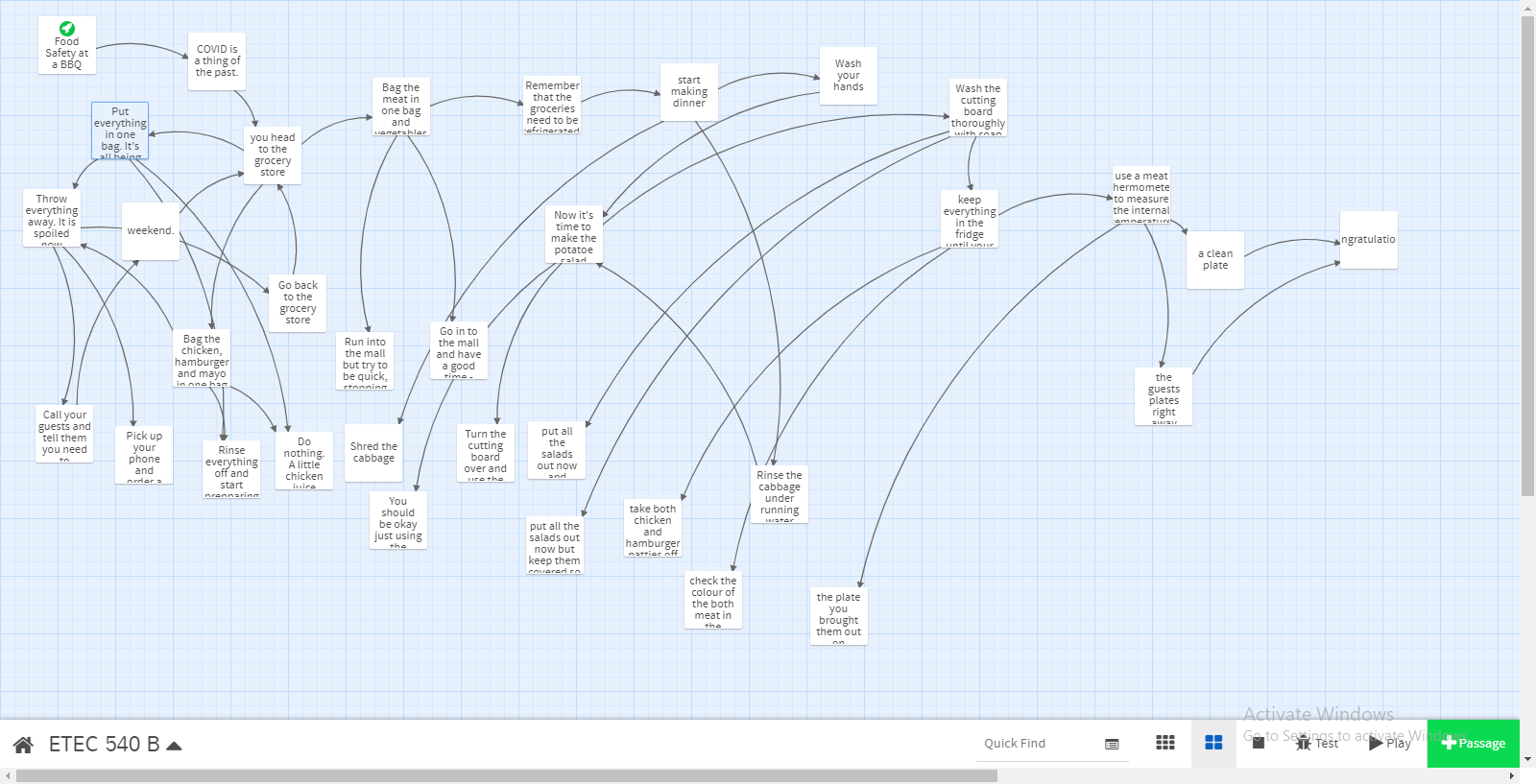The Twine task has been one of the more challenging tasks yet. Before I started designing and developing my interactive game, I had to come up with a story. Designing a “choose-your-own” adventure type story requires significant creative capabilities. It was difficult for me to even fathom how I might create a complex story with different potential outcomes. We typically think of a story as being linear with a beginning, a middle and an end. Trying to conceptualize a story that may have different outcomes and contain many different hyperlinks can get overwhelming and so it became clear that I needed to step back and design some form of a framework – perhaps a beginning and 2 or 3 possible ends. The middle would be the second priority. When I stepped back and took this approach, it was easier for me to choose a story and actually sit down to write it. I decided on a topic I am familiar with – Food and Nutrition. I chose Food Safety because it was easy to create a story that might reflect a real-life scenario which ended up being: hosting a dinner party.
At first, I wasn’t quite sure I understood the significance of the task in relation to Module 5. However, after some reflection and consideration of the final product of my Twine story, I was able to better appreciate the complexity of the organization of information and text in cyberspace as mentioned in Bolter’s (2001) remarks. It is not linear as information usually is in codex and as a story would be in a physical book. However, I do remember reading Goosebumps “choose-your-own-story-books” as a kid and how exciting they were. While they were exciting, they were not very practical when you had to physically sift through pages to find the designated page you chose. A complex story, with different potential outcomes, makes far more sense in cyberspace than it does in codex.

A second connection I made to Module 5, was how I chose to communicate in my Twine story. I felt that there had to be some tone in my writing. I wanted to make it engaging and fun for the participant. After listening to The Allusionist episode with Helen Zaltzman and Grechen McCulloch, I was surprised to identify with many of the written communication rules mentioned in reference to how we tend to speak in an online (usually informal) environment. How we use punctuation and capitalization to communicate emotion. Because I wanted the tone in my Twine to sound more like my voice and like a conversation I was having with the participant. What I find most fascinating about this is that there seems to a common understanding when it comes to this form of communication. It’s not like we were ever taught that using capitalization signifies yelling. Or choosing to use a period or not at the end of a sentence signifies a more or less curt implication. I tended to use these unwritten rules in the text of my story which gave it more colour and more of a voice.
I am not completely satisfied with the final product of my Twine. I struggled with including photos and sound. My laptop crashed a lot during the process and I gave up on adding music. However, I would like to believe that I still was able to appreciate the essence of the task and how it relates to the changing spaces of reading and writing.
References:
Bolter, J.D. (2001). Writing Space: Computers, hypertext, and the remediation of print (Links to an external site.). Mahway, NJ: Lawrence Erlbaum Associates, pp. 77-98.
Zaitzman, H. (2019). New Rules McCulloch, G in The Allustionist. https://www.theallusionist.org/allusionist/new-rules
